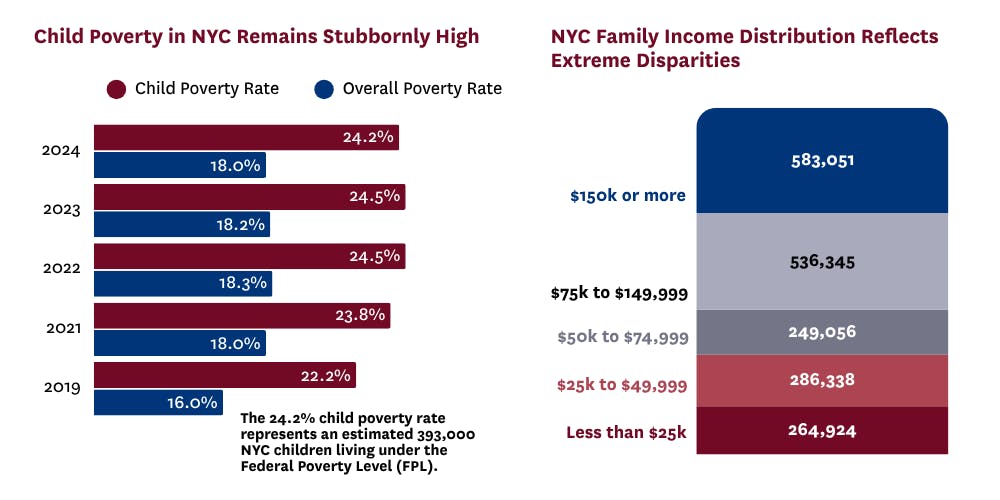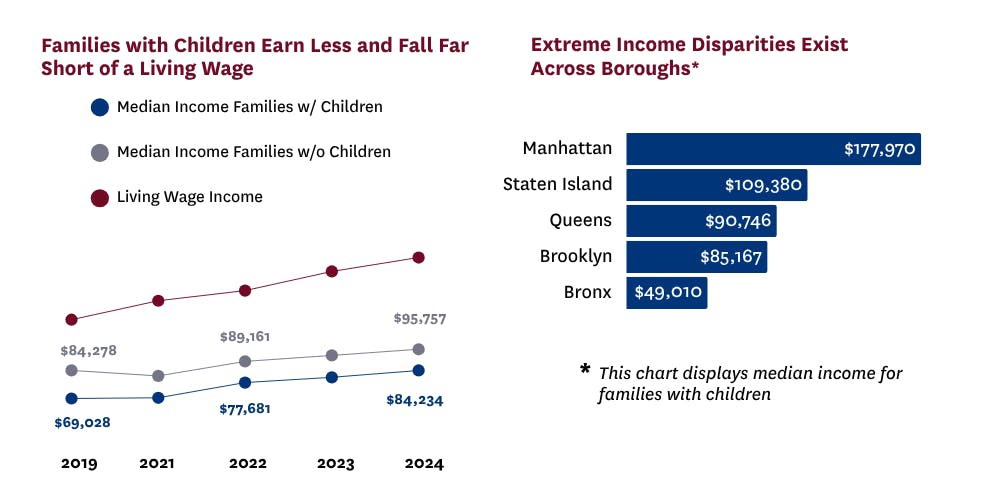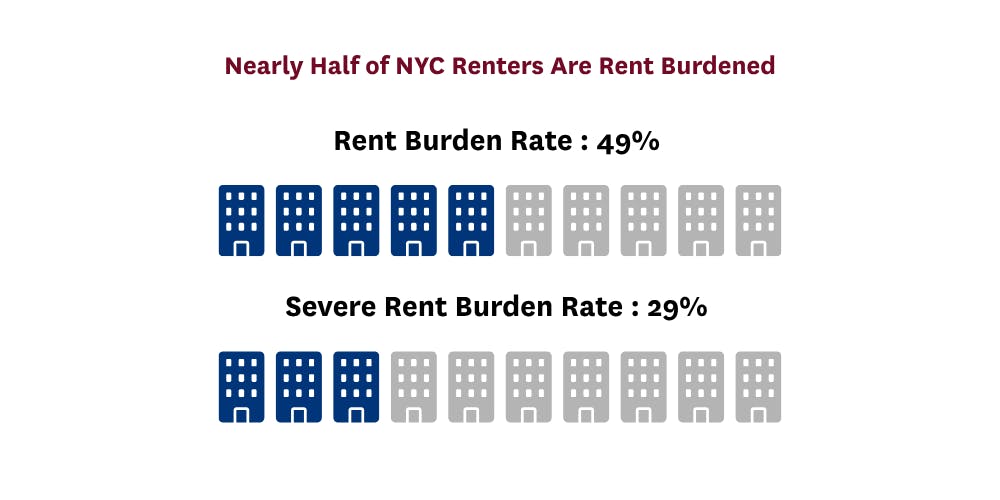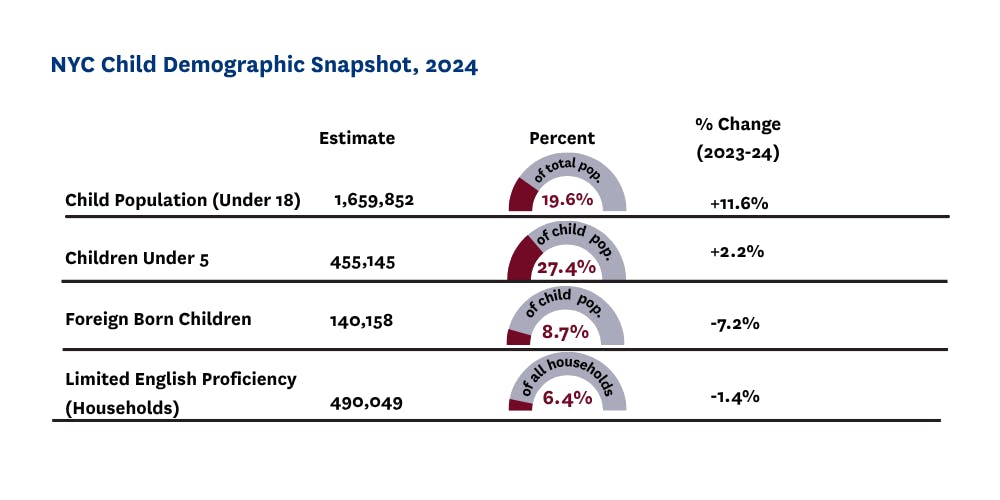{{ store.activeSection.section_name }}
Highlights from {{store.activeSection.section_name}}
{{ fact.copy }}


October 21, 2025
New data from the American Community Survey shines a light on the persistent economic challenges facing New York City’s families. Nearly a quarter of NYC residents, 22%, live below or near the federal poverty level, earning less than $39,000 a year. Rising rents, unaffordable child care costs, and the growing gap between incomes and true cost of living are all driving too many New York families into poverty. As the city looks ahead to a new Mayoral Administration, the following data necessitate bold policy solutions to advance economic security for NYC children and their families.

New York City has over 583,000 high-earning families (earning $150,000 or more), and nearly the same number (551,000) of families earning incomes below $50,000.

Median income1 for families with children has increased over the past several years, but remains consistently lower than median incomes for families without children. Despite growth, median incomes fall short of the estimated living wage2 needed to meet basic family needs and well below what is needed to be economically secure.3

Nearly half of NYC Renters Are Rent Burdened
Two-thirds of NYC households are renters, and among these, half are rent burdened (paying more than 30% of their income on rent) and almost 3 in 10 are severely rent burdened (paying more than 50% of their income on rent). With median monthly rent reaching an all-time high in 2024, housing costs continue to strain family budgets.
Rising Unemployment Affects NYC, Especially Young Adults
NYC’s unemployment rate rose from 6.3% to 6.9% between 2023 and 2024—a statistically significant increase that signals a troubling trend. The unemployment rate also climbed for young adults ages 20-24 from 11.3% to 13.2%.


Statistics use data from the American Community Survey, 2024 1-year estimates.
Highlights from {{store.activeSection.section_name}}
{{ fact.copy }}